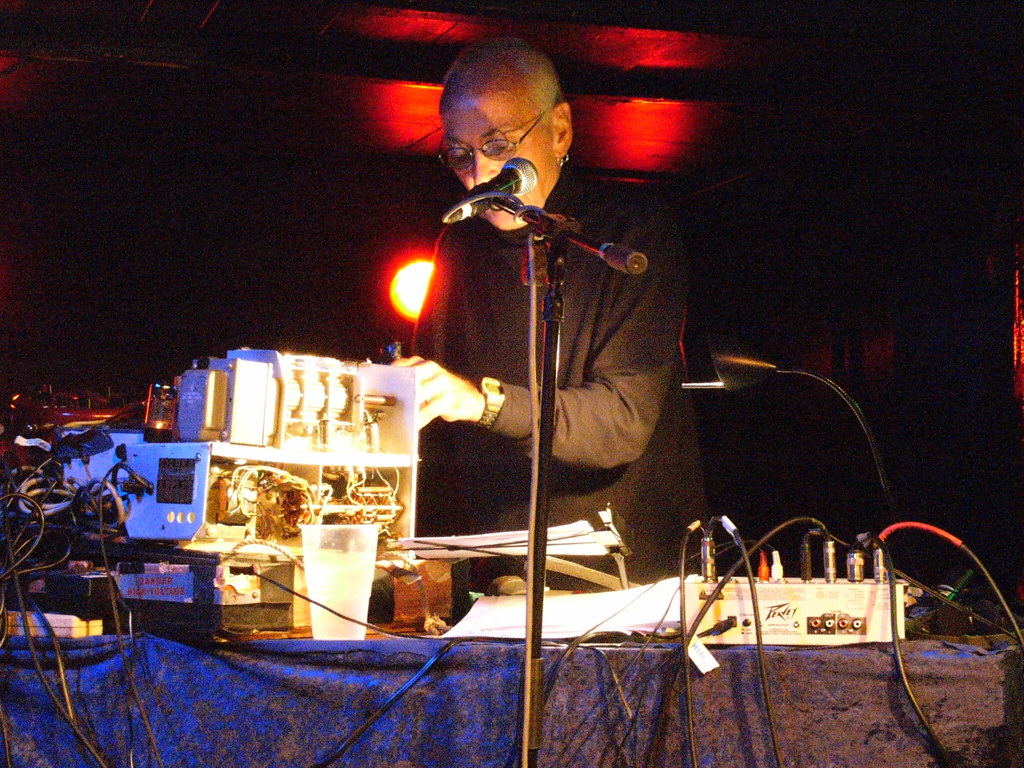I have a special place in my heart for primitive uses of now commonplace technologies. There’s something so delightful about past people marveling over the revolutionary changes that, say, the microwave, will bring to our lifestyles. This extends into music. Electronic music technology was available 80 years before anyone had a clue what to do with it. Double credit for hippies convinced that synths will be the next brain-expanding discovery in the counterculture. So, given my interest in these kinds of cultural artifacts, I was surprised when my brother forwarded me an apparently prominent band in this genre whose name I’d never heard before: Silver Apples. This mystery was compounded by his only description for it, “It’s like straight up Glitchpop, but from the late sixties.”
Let’s make our introductions, there are two apples in this bunch, Danny Taylor and Simeon. They have a pretty standard hippie story until about 1967 when Simeon started to incorporate an audio oscillator into their psychedelic rock band, which promptly drove away everyone but Taylor. For context, an audio oscillator is not strictly an, uh, instrument? It’s a piece of technology used in telegraphs and radio transmissions to produce regular intervals of electric current. Like, if you set it to the right frequencies, it makes a sound, but only in the pattern of a sine wave, with a cyclical change in pitch and absolutely no change in timbre. It almost comes off as the endless repetition of a two-second recording, because the oscillator creates an identical cycle of sounds until the frequency or amplitude is changed. This limitation is doubled by the fact that there is only one audio setting total, and that is the sound of blooping robot noises.
So how does one go about making a disassembled telegraph into a musical instrument? Well, the honest answer is probably some form of now illegal drugs, but more to the point you stack like thirty of these things on top of each other and hook them to the same control panel, which is exactly what Silver Apples did. Now, for a bunch of technical reasons I’m not going to get into because trust me, you do not care, this machine is technically a form of very basic synthesizer. I did not know it was possible to make a homemade synthesizer, but Simeone managed to make one. Like most homemade instruments, Simeon’s synthesizer had its eccentricities. For instance, it wasn’t controlled through a keyboard like most synthesizers, it was controlled through a panel of telegraph levers that could be set on or off. This effectively means that playing Simeon’s “instrument” was like playing one of those flash game pianos that set each key on your keyboard to a note, except your playing it with sticky keys on, so to stop a note from playing you have to press the corresponding key. Oh, and each note isn’t one discreet pitch, but a sine wave of pitches oscillating from one extreme to the other.
If this sounds like a bit of a hot mess, you would be correct. While the music itself definitely has telltale signs of the technology used to create it, the overall effect is more calculated than you might expect. The lyrics, which yes their music has lyrics, were often written by non-musical poets the group was friends with, and Taylor is a decent art-rock drummer, comparable to her fellow female drummer in a male band, Mo Tucker. This means that their music is not an avant-garde experiment with emerging technologies, if it was it would have probably been listened to by a hand full of college professors before being forgotten. No, Silver Apples are a pop band… somehow. I can’t explain it but the whole is radically different than the sum of its parts here, and with early electronica, there are a lot of parts.
Does all this add up to Silver Apples being good? Well, to be honest with you I’m not sure. The band is certainly interesting, but there are some serious flaws. For one, I question their decision not to hire another singer, because Simone and Taylor have fairly limited ranges both vocally and in terms of expression, which isn’t great when the primary instrument is so monotonous. Also, despite the lyrics being contracted out, they are still not great. Don’t get me wrong, the lyrics have unparalleled camp value, but I’m not quite sure if “The flame is its own reflection,” is really the deep meaningful poetry Simeon thought it was.
Criticisms aside, I think there’s something to be said for primordial uses of basic musical elements. Listening to music like this reminds us that our current techniques for assembling sounds into songs are not final. Even fundamental concepts like pitch and rhythm are, at best, oversimplifications of the truth. Pitches can in fact be cycles, rhythms can be oscillations, and sometimes, music can spring from a Frankenstein’s telegraph someone built in their backyard.

